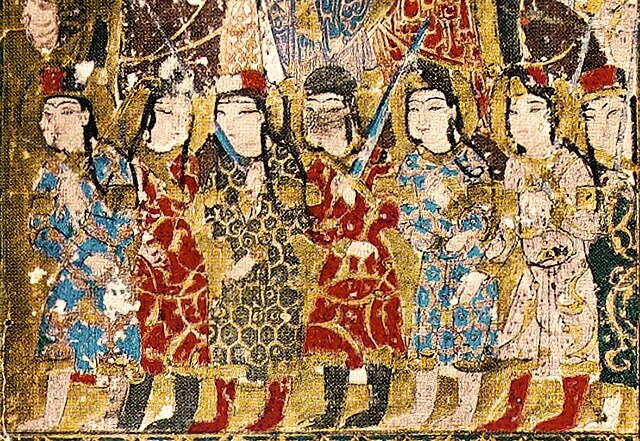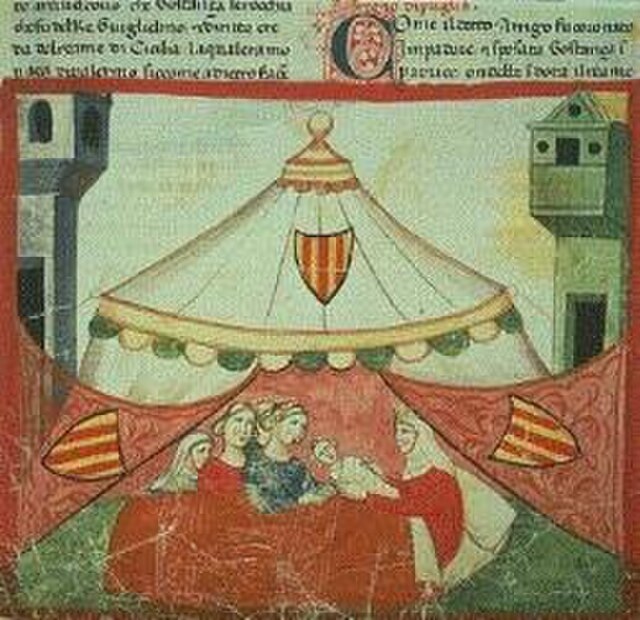The Sixth Crusade (1228–1229), also known as the Crusade of Frederick II, was a military expedition to recapture Jerusalem and the rest of the Holy Land. It began seven years after the failure of the Fifth Crusade and involved very little actual fighting. The diplomatic maneuvering of the Holy Roman Emperor and King of Sicily, Frederick II, resulted in the Kingdom of Jerusalem regaining some control over Jerusalem for much of the ensuing fifteen years as well as over other areas of the Holy Land.
Frederick II (left) meets al-Kamil (right)
Zengid soldiers armed with long swords and wearing the aqbiya turkiyya coat, tiraz armbands, boots and sharbush hat, at the time of the atabegate of Badr al-Din Lu'lu' in 1218–1219. Kitab al-Aghani, Mosul.
Zengid or Luluid horsemen, Jazira region, Kitāb al-Diryāq, 1225–1250.
Frederick II, Holy Roman Emperor
Frederick II was King of Sicily from 1198, King of Germany from 1212, King of Italy and Holy Roman Emperor from 1220 and King of Jerusalem from 1225. He was the son of emperor Henry VI of the Hohenstaufen dynasty and Queen Constance of Sicily of the Hauteville dynasty.
A gold augustalis bearing Frederick's effigy. Legend: c(a)esar aug(ustus) imp(erator) rom(anorum)
The birth of Frederick on the market square of Jesi from the Nuova Cronica, Biblioteca Apostolica Vaticana, ms. Chigi L. VIII.296 (cat. XI.8)
Constance handing her son over to the care of the duchess of Spoleto, the wife of Conrad of Urslingen, from the Liber ad honorem Augusti by Peter of Eboli
Seals used by Frederick as Emperor (ed. Otto Posse 1909): 1: first imperial seal (1221–1225), 2: second imperial seal (1226), 3: third imperial seal, addition of the title of King of Jerusalem (1226–1250) 4: seal used in 1221 and 1225, 5: first seal as King of Jerusalem (1233).







